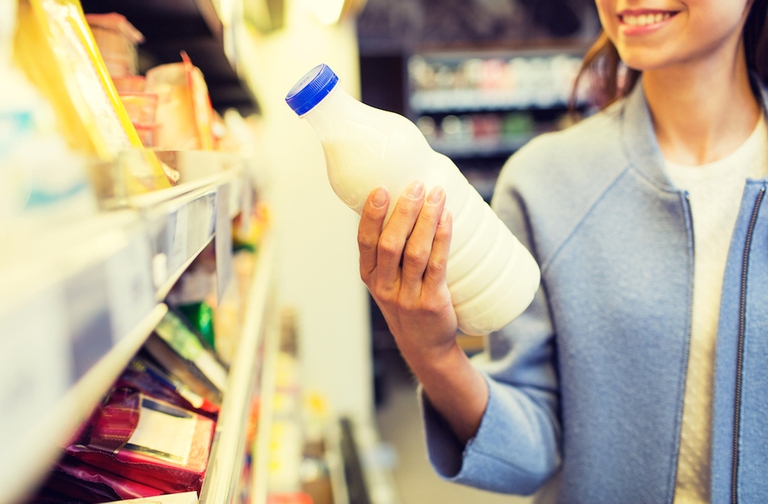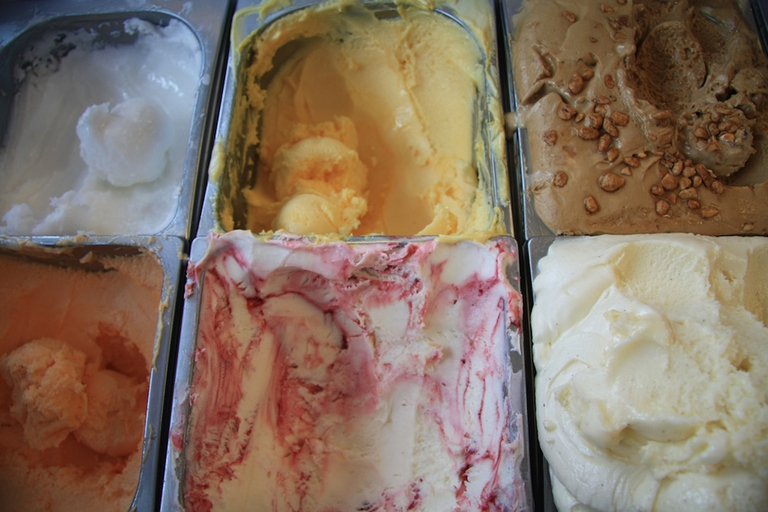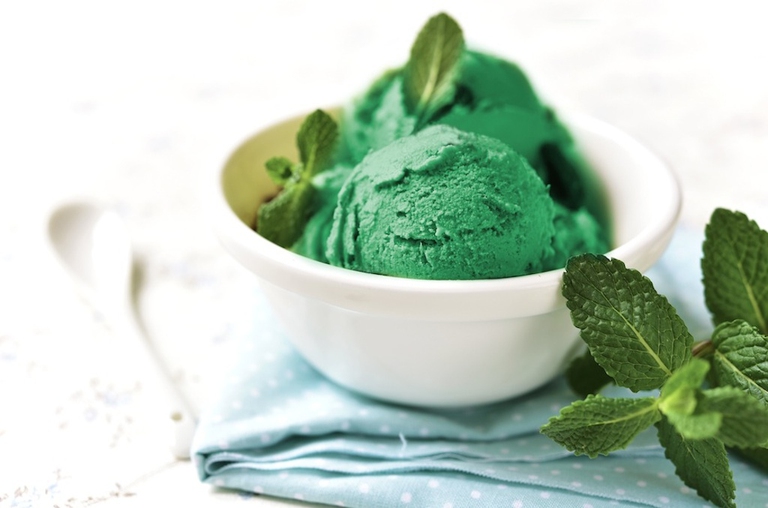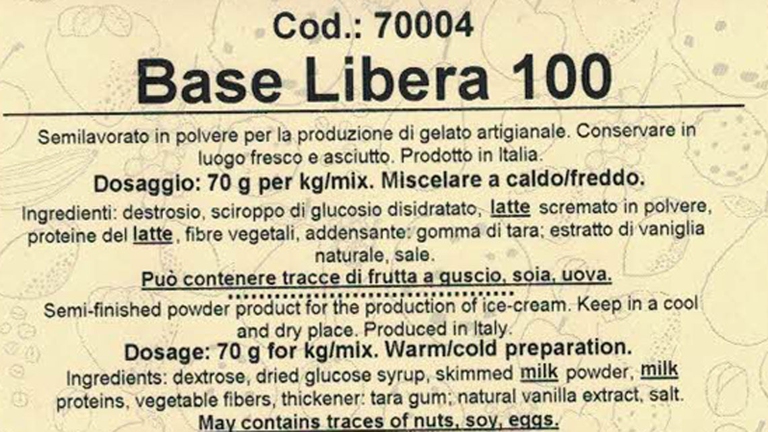
Factory farming conditions and antibiotic-resistant pathogens emerging as a result of them pose an existential threat to humans in the form of zoonotic diseases. Why it’s time to produce and consume food more thoughtfully.
Like with all foods, the quality of an ice cream can be discerned by reading its label. An expert explains how to do this, and tells us how their company steers clear of chemicals, using only natural ingredients to produce an excellent and “free” ice cream.
Setting high standards when it comes to food quality begins with reading product labels correctly. Certifications, ingredients, nutritional values, conditions of use and conservation, provenance and the expiration date are just some of the details included on labels, which act as a sort of product ID. This is a very useful tool for those who wish to make conscientious choices as to what to eat, as well as allowing manufacturers to share their products’ characteristics, adopting a policy of total transparency with their customers.
Read more: A good ice cream parlour must have more than just good ice cream
The rules for food labelling in the European Union (regulation 1169/2011, which replaced previous laws that were more fragmented) also apply to ice cream. And because no one can resist its refreshing goodness, we asked an expert to help us understand how to read its label and recognise a quality product. Francesca Trainotti is head of quality control at Galatea, Italian company specialised in the production of semi-finished products for ice creams. She explains that, “when we purchase an ice cream, the first thing we should do is read the ingredients list: ice cream parlours must display it and declare the presence of any allergens”. “What makes the difference is whether or not the product contains chemicals, such as additives, thickeners and artificial colours. Also check for emulsifiers, fatty acids and processed components. Generally, these ingredients are the ones with the longest names or those marked with the letter E, even though this isn’t always the case”.
Galatea has always strived to stay at pace with the legislative framework by adjusting its recipes accordingly. In 2006 it adopted “clean labels”, making all useful information easy to understand and getting rid of any ambiguous terms. “We simply consider it an act of honesty towards whoever chooses our products and a way of showing that we have nothing to hide in the way we work,” the company states. Since its founding in the province of Treviso in northeastern Italy in 2003, Galatea has been producing ice cream and artisanal pastry products that are healthy, respect all the key timely traditions as well as the well-being of people and the environment, and has been engaged in research and development activities on corporate social responsibility and sustainability. For example, Galatea steers clear of hydrogenated fats and artificial colours like cochineal: “We mainly use natural ingredients like plant extracts and concentrates,” Trainotti explains. An example? Mint flavoured ice cream that is naturally green by combining spirulina algae extract, which is blue, and safflower, a yellow, scented plant.
These are the considerations that led to the creation of many Galatea products, such as the Libera line, called this way because it is “free” from non-natural ingredients; the Organic line, which contains at least 95 per cent organic ingredients; the Vegan line, which doesn’t contain animal-based products and coadjuvants, or raw materials obtained from genetically modified organisms; and the Ethical line of nutritionally healthy and balanced products that are free from hydrogenated fats.
Siamo anche su WhatsApp. Segui il canale ufficiale LifeGate per restare aggiornata, aggiornato sulle ultime notizie e sulle nostre attività.
![]()
Quest'opera è distribuita con Licenza Creative Commons Attribuzione - Non commerciale - Non opere derivate 4.0 Internazionale.
Factory farming conditions and antibiotic-resistant pathogens emerging as a result of them pose an existential threat to humans in the form of zoonotic diseases. Why it’s time to produce and consume food more thoughtfully.
We’re talking about Galatea, a company that produces semi-finished products for artisanal ice creams using high quality ingredients, natural colouring, excluding thickeners and hydrogenated fats, respecting the environment and supporting the less fortunate.
Quality ingredients, no artificial colouring and hydrogenated fats. These are the main features of a great ice cream. But what makes an ice cream parlour “good”, i.e. sustainable?
The world of cinema recognises the link between food choices and the climate crisis by offering vegan menus for awards season events, including at the most important of them all: the Oscars.
Let’s look at the reasons behind the growth of veganism in India, as a small yet vocal section of the population turns towards this diet and lifestyle in the largest milk producing country in the world.
by Jeffrey Y. Campbell, Manager of the Forest and Farm Facility at FAO In the Ecuadorian Amazon, Kichwa farmers grow dozens of products on tiny parcels of land. Their lands hum with biodiversity, yielding nutritious foods that have sustained families for generations. Wandering among fruit and nut trees and crops, these indigenous agroforesters fill their baskets
Mint has many health benefits, but in food it’s often accompanied by artificial green colourings. Instead, Galatea has created a green mint ice cream in a completely natural way.
The mad rush to fake food, like fake meat made with genetically-modified soy, ignores the importance of the diversity of our foods and culinary cultures. It’s a recipe to accelerate the destruction of the Planet and our health.
She healed completely by becoming vegan over 25 years ago following an accident that cost her her leg. We met Heather Mills at Seeds&Chips, where she told us about her pioneering food company VBites.











